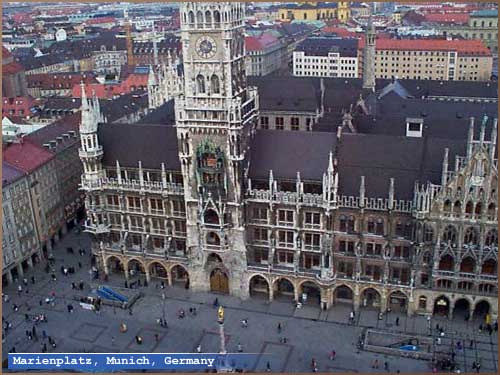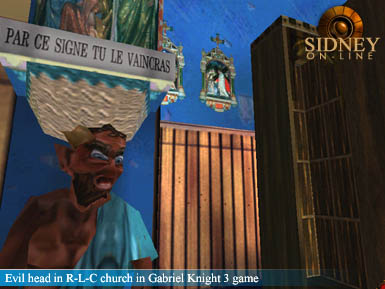
Locations
This page is to show all people that many of GK locations are real an U can find it somwhere in the world. I think this page is unique, I didn't see something like this. I hope many fans will like it an maybe it helps some of them to visit these places.
Rennes-Le-Chateau, France (GK3)
The Languedoc region of southern France has been a hot-bed of occult, heretic and mysterious activity for thousands of years. The region's occupants have included the Merovingians, the Cathars, the Visigoths, and the Knights Templars.
In 1891, the poor parish priest of the Languedoc village of Rennes-Le-Chateau made a discovery that has continued to intrigue and mystify modern researchers and treasure hunters. During the restoration of his church the
priest, Bérgenger Sauniére, uncovered sealed parchments that had been placed in a stone altar. These parchments contained coded messages, some of which have not been deciphered to this
day. Sauniére brought these parchments to Paris, where he allegedly conducted meetings with members of secret occult societies.
When he returned to Rennes-Le-Chateau, he began spending millions of dollars constructing snd renovating the church and surrounding area. He spent his days on secluded walks in the country-side, destroying local landmarks, and died without revealing his secrets.
There have been many heories about what Sauniére found, a few of them gaining more attention than
others.
This also means, that some things in GK3 game were created after real originals. For example tower Tour Magdala, church, willa Bethania etc. we have two photos showing this.

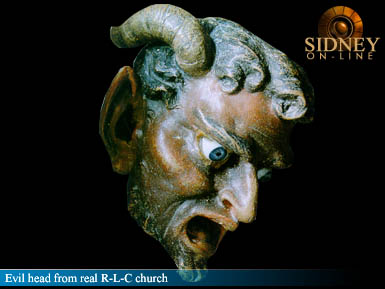


Castle Neuschwanstein, Germany (GK2)
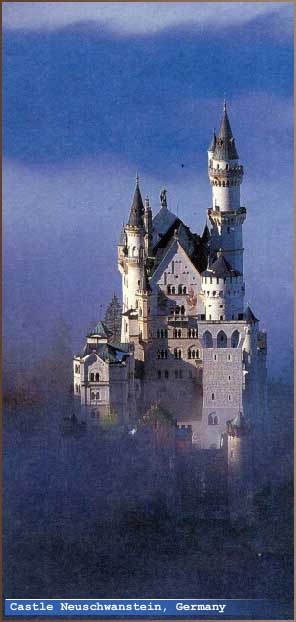 |
The ultimate
fairy-tale castle, Neuschwanstein was also Ludwig's first castle. He planned it for the
alpine region around Hohenschwangau, the area he loved most. He also envisaged it to be
more magnificent than his father's castle of Hohenschwangau. The first seeds of inspiration for the great castle came from a mini-Wagner festival that Ludwig ordered for the Munich Court Theatre in 1867. The festival was to include new productions of "Lohengrin" and "Tannhäuser", and Ludwig wished the sets to be totally authentic historically and artistically. To be sure of the accuracy of the production, he decided to undertake a journey to Wartburg Castle in Thuringia to study the actual location where "Tannhäuser" was supposed to take place, arriving there on May 31, 1867. While the young King was studying the magnificent 11th cent. castle (the restoration of which had been completed that year), he first thought of building his own medieval castle. In the Wartburg he saw a castle that symbolised everything he loved and was obsessed by at that time - mountains, legend connected to Wagner's operas, and the middle ages. It was a castle that held more history and legend than his beloved Hohenschwangau, and he was determined to build, if not a replica of the Wartburg, then a castle of his own surpassing this one in beauty. |
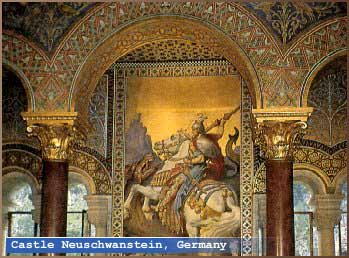 |
|
Castle Herrenchiemsee, Germany (GK2)
The last of Ludwig's three castles to be built is certainly the most flamboyant. Herrenchiemsee is an incredible replica of Versailles, sitting on an island in the middle of an alpine lake. It is an amazing site, especially after visiting the real Versailles.
When Ludwig visited Paris in 1867, he undertook an excursion to Versailles, the great Palace of the Kings of France. Here he was struck with an obsession for the Bourbon Kings of France, an obsession that grew as he matured. When Linderhof turned into a Royal Villa rather than the 'New Versailles' that he wanted to create, Ludwig looked elsewhere for a suitable site for this cherished dream. He found the site in the form of an island in the Chiemsee, Bavaria's largest lake. He bought the island in 1873, and after another visit to Paris to study Versailles, designs were drawn up, once again mainly by Christian Jank, Franz Seitz, and Georg Dollman.
The foundation stone was laid on 31 May, 1878, and so all three castles were at some stage of construction simultaneously. Many of the interior decorations - mainly the fabrics - had been ordered years before, as the interiors were worked out before the exterior. Perhaps this was because the model for the exterior already existed.
One of the most remarkable aspects of Herrenchiemsee is the fact that so much was done in such a short time. Although it reached it's current appearance shortly after Ludwig's death, it was more or less completed by 1885; seven years after the foundation staone was laid. This was also at a time when money was quickly running out! For as one can imagine, Herrenchiemsee cost a lot of money. One only need look at the interior to see this. But contrary to what people believe, Ludwig did not bankrupt the country building his castles, as he paid for them from his own pocket. Funds were, nonetheless, running very low by the time Herrenchiemsee was nearing a reasonable state of completion.
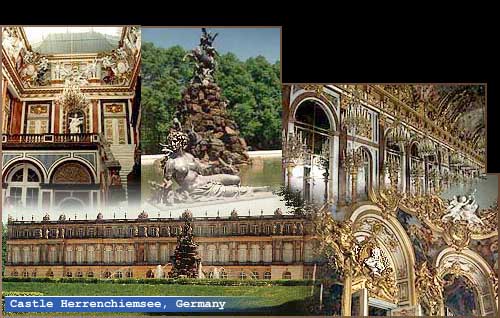
As Ludwig grew older, he became more and more obsessed with the idea of Absolute Monarchy. As he lost actual power as a King, in his dreams his power increased until he became an Absolute Monarch, like Louis XIV, whom he almost worshipped. The 'New Versailles' was seen by Ludwig as a monument to the 'Age of Absolutism' ie. the 17th and 18th cent., when a King held supreme power over everyone in his kingdom, and no-one dared challenge the word of His Majesty.
By 1885 the palace was completed enough for Ludwig to finally fulfil his life-long dream and live in his own Versailles. But after all the effort in building the palace, he only stayed here for a total of sixteen days.
Munich, Germany (GK2)
Munich, "the city with a heart," is the capital of Bavaria, a kingdom from 1806-1918 and a Freistaat (Free State) to date. In 1945, 85% of Munich was a heap of rubble. But undaunted, its citizens rebuilt the beautiful city on the Isar river. Munich, a city with a liberal atmosphere, attracted great minds from all over Europe and America to become a center of learning and culture.
Munich has now established itself as one of the most important industrial and economic centers in the European community. It boasts of such hi-tech corporations as BMW, Siemens, and Krauss Maffei. Munich is the country's leading university center, focusing on medical science and research, as well as an important insurance, banking, electronic, and mechanical engineering hub.

Here are some locations known from Gabriel Knight® - The Beast Within game:
Neuschwanstein (GK2)
World-famous fairy-tale castle built by King Ludwig II on an imposing rock in the seclusion of the mountains. Close by are the old castle of Hohenschwangau and the crystal clear Alpsee lake. About two hours by car from Munich. (see texts above).
Altes Rathaus (Old Town Hall) (GK2)
Marienplatz 15
80331 München
Most easterly building on Marienplatz square, at the heart of Munich. Gothic council hall
and ballroom and the adjoining town hall tower have been reconstructed.
Neues Rathaus (New Town Hall) (GK2)
Marienplatz 8
80331 München
Built 1867 - 1909 in Flanders Gothic style; its facade, over 300 feet in length, features
strikingly elaborate stone ornamentation. Its 260-foot tower with carillon is, with St.
Peter's Church and the twin towers of the Cathedral, one of the most distinctive features
of the city's skyline.
Glockenspiel im Rathausturm (Carillon in New Town Hall Tower) (GK2)
Largest carillon in Germany, with near-lifesize figures performing the traditional Coopers' Dance and a jousting match.
Hellabrunn Zoo in Munich-Thalkirchen (GK2)
Tierparkstraße 30
80992 München
Tel. 62 50 80
First "geo-zoo" in the world, with approximately 460 species and a total of
about 5000 animals.
